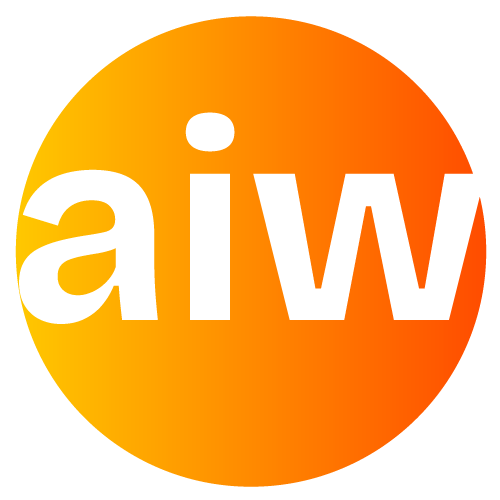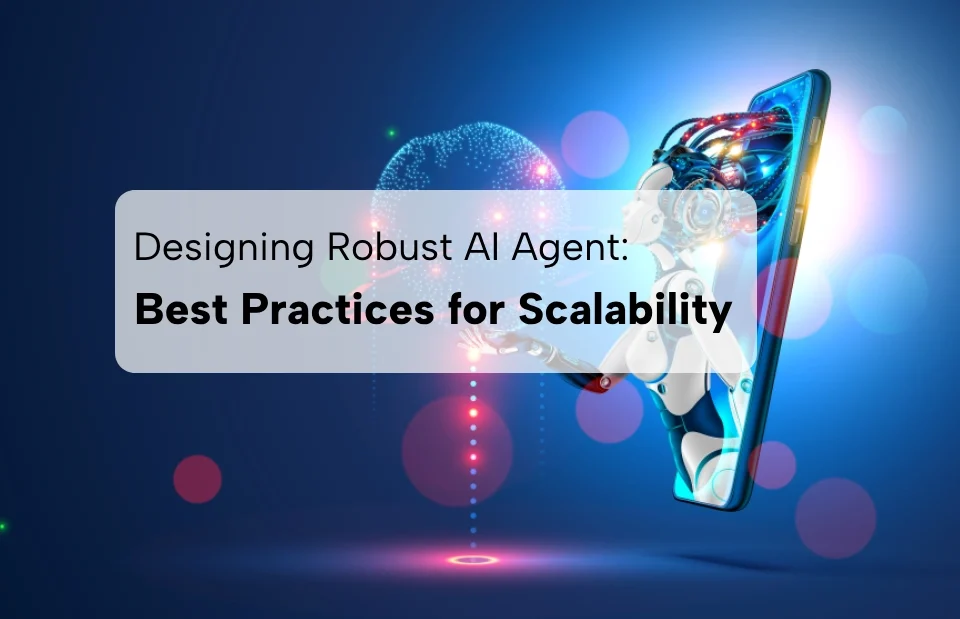Financial services firms in Dubai are rapidly adopting RPA and AI to transform operations. These technologies streamline workflows and reduce errors. Moreover, they free employees from repetitive tasks to focus on strategy. AI in Finance and robotic automation together boost efficiency and compliance in banks, insurers, and fintech companies. In fact, global RPA in financial services is growing at 25.5% CAGR, reaching $12.3 billion in 2025. Similarly, the UAE’s AI in Finance market is projected to grow 25% annually to $514 million by 2032. This guide provides practical steps to implement RPA and AI in Dubai’s financial sector with real examples, use cases, and answers to common questions.
Key Takeaways:
- RPA automates repetitive tasks, while AI adds intelligence to decision-making—together, they create powerful automation in finance.
- Dubai’s financial sector is rapidly adopting automation to cut costs, improve compliance, and boost service speed.
- Real-world examples show banks, insurers, and fintechs saving millions and reducing turnaround time by up to 75%.
- Start small with rule-based, high-volume tasks like reconciliations, AP workflows, or claims processing for quick wins.
- Combining RPA with AI unlocks smart workflows—e.g., AI flags risk, RPA acts on it instantly.
- A structured implementation—from identifying use cases to scaling—ensures long-term ROI.
- Common challenges include legacy system integration and staff training, but experienced partners ease the journey.
- Working with local experts like AIWorkfllows helps financial firms align with Dubai’s regulations and market needs.
- Automation is no longer optional—it’s critical for staying agile and compliant in Dubai’s evolving financial landscape.
Table Of Contents
What is RPA and How It Works With AI
Robotic Process Automation (RPA) is a technology that uses software bots to mimic human actions in digital systems. These bots log into applications, move files, extract data, fill forms, and perform routine tasks just like a human would. But unlike humans, bots work 24/7 without breaks and don’t make typing mistakes.
For example, a bank’s compliance team might spend several hours each day manually reconciling transaction records across multiple systems to detect suspicious activity. An RPA bot can automate this entire process — extracting data, cross-referencing it across platforms, flagging anomalies, and generating audit-ready reports — all within minutes, with greater accuracy and zero fatigue.
Artificial Intelligence (AI), on the other hand, is about decision-making and learning. It analyzes unstructured data, recognizes patterns, and makes predictions. AI includes technologies like machine learning, natural language processing (NLP), and computer vision.
When RPA and AI work together, it creates what’s known as intelligent automation. RPA does the repetitive execution, while AI handles the thinking.
Example: AI reviews thousands of loan applications and ranks them by risk. RPA then inputs the decisions into a loan processing system and notifies applicants. This combination speeds up work and reduces human intervention.
In short, RPA makes workflows faster, and AI makes them smarter. Together, they automate both the doing and the deciding – a powerful combo for financial services.
Why Embrace RPA and AI in Financial Services?
Implementing RPA and AI offers clear benefits for banks, insurance firms, and fintech startups.
- Firstly, automation improves speed and accuracy. Software bots handle routine work 24/7 without fatigue. For example, First Abu Dhabi Bank deployed 110 RPA bots that executed 9.2 million transactions and saved 1.3 million hours annually – about AED 210 million in costs.
- Secondly, RPA ensures consistency and error reduction, which is vital in finance. Tasks like data entry, compliance checks, and reporting are done with precision, minimizing mistakes.
- Additionally, RPA creates detailed audit trails to meet strict regulations, a key need in Dubai’s regulated financial environment.
- Furthermore, integrating RPA and AI unlocks advanced capabilities. AI algorithms can analyze large datasets for insights while RPA bots execute the resulting actions.
In practice, this synergy handles complex work like fraud detection and financial forecasting: AI flags anomalies or patterns, and RPA generates reports and compliance alerts automatically. Banks leverage AI in Finance models to predict risks, and RPA applies those insights to streamline approvals and workflows. This powerful combination yields “intelligent automation,” achieving cost reductions of 25–50% in operations when cognitive AI is applied with RPA. It also improves customer experience – employees spend more time on client-facing tasks while bots handle back-office chores.
Finally, RPA and AI give financial institutions a competitive edge. They cut costs, boost productivity, and enable faster decision-making. In Dubai’s fast-growing fintech hub, automation is becoming essential. The government’s innovation initiatives (like the UAE AI Strategy 2031) encourage business process automation workflow adoption. Early adopters in the region report higher customer satisfaction and quicker service delivery. In short, embracing automation in Dubai’s financial services leads to efficient operations, regulatory compliance, and improved market agility.
Use Cases Across Banking, Insurance, and Fintech
Financial organizations in Dubai are applying RPA and AI in many practical ways. For example, here are key use cases in banking, insurance, and fintech:
- Banking: Banks use RPA bots for customer onboarding, loan processing, and reconciliations. Meanwhile, AI models improve credit scoring by analyzing customer profiles and spending patterns more accurately, while also detecting fraud through behavioral insights missed by traditional systems.
Together, RPA and AI can verify KYC documents and flag fraud faster than manual review. Major UAE banks have automated hundreds of processes – reducing processing times by over 50% and enhancing compliance. For instance, an RPA bot can match transactions for daily bank reconciliation, sending instant alerts on mismatches, which improves accuracy and cash flow control.
- Insurance: Insurers automate claims and policy administration with RPA and AI. Bots extract data from claim forms and enter it into systems, while AI assesses damage or risk levels. As a result, claims that once took weeks can be processed in minutes.
Studies show RPA can process insurance claims up to 75% faster than humans, drastically cutting turnaround time. Automated claims handling also reduces manual work by ~80%, letting insurance staff focus on complex cases and customer service.
- Fintech: Fintech startups leverage AI in Finance for innovative services and use RPA to scale operations without large teams. For example, a fintech lending platform might use AI to analyze loan applications and an RPA bot to update account records and send approval emails instantly.
Many fintech firms also streamline their internal finance with Accounts Payable (AP) AP automation workflow. Incoming invoices are read by AI (using OCR), then an RPA bot inputs data into the accounting system and routes it for approval, achieving near touchless processing. This business process automation workflow speeds up vendor payments, improves accuracy, and saves significant effort on invoice handling.
Across all these sectors, a clear trend is emerging: RPA bots handle repetitive tasks, while AI—especially with advancements in language models—enables intelligent decision-making that was once beyond software capabilities. Banks benefit from faster transactions and reporting, insurers streamline claims and underwriting, and fintechs scale without increasing headcount. These real-world gains show why automation is becoming a top priority across Dubai’s financial services industry.
Step-by-Step Guide to Implementing RPA and AI
Implementing RPA and AI in a financial organization requires a structured approach. Below is a step-by-step guide to ensure a smooth automation journey:
- Identify Automation Opportunities: Begin by pinpointing which processes are ideal for automation. Look for repetitive, rule-based tasks that consume significant employee time (data entry, reconciliations, reporting, etc.). Involve stakeholders from operations and IT to map these tasks. Start with a small scope – for example, an AP automation workflow for invoice processing or a simple customer data update process or assigning Customer Executives to the defaulters in the CRM. Clear selection of use cases with high impact and quick wins will build confidence in the project.
- Build a Business Case and Secure Buy-In: Calculate the potential ROI and efficiency gains of automating the chosen process. For instance, estimate hours saved, error reduction, and faster turnaround. Many organizations have seen labor cost savings of 25–50% on automated processes. Present these benefits to executives and align the initiative with business goals (cost reduction, better compliance, improved customer experience). Additionally, address any concerns about regulatory compliance or security upfront. Securing management and stakeholder buy-in is crucial for funding and support.
- Choose the Right Tools and Partners: Select an RPA platform and any AI technologies required for your use case. Key factors include ease of use, scalability, and compatibility with your existing systems. Popular RPA tools offer AI integrations (like document understanding or machine learning modules). Consider partnering with experienced solution providers like AIWorkfllows for guidance. In Dubai, firms often collaborate with specialists to implement a business process automation workflow tailored to their needs. Choosing a trusted partner ensures best practices are followed and reduces implementation risk.
- Design the Automation Workflow: Map out the detailed steps of the process to automate, from start to finish. Moreover, include decision points where AI will be applied (e.g., an AI model to classify a loan application as approve or reject). Create a flowchart of the business process automation workflow, specifying inputs, outputs, and exceptions. This design phase should involve subject matter experts to capture all rules and variations. Keep compliance requirements in mind – define how the bot will log actions for audit and handle sensitive data securely. A clear design will guide development and set proper expectations.
- Develop and Test the RPA Bots (and AI Models): Configure or code the RPA bots according to the design. Many RPA tools are low-code, enabling quick bot creation. If using AI (such as an ML model or OCR), train it on historical data for accuracy. Then, rigorously test the automation in a controlled environment. Verify that the RPA and AI solution handles various scenarios, exceptions, and error conditions. For example, test an AP bot with invoices that have missing data or mismatched totals to ensure it flags exceptions correctly. Additionally, test integration with existing banking systems or databases to ensure the bot interacts smoothly with them. Early testing and iteration will prevent costly issues later.
- Pilot Deployment and Training: Deploy the bot in a limited, real-world pilot. Monitor results closely. Ensure the RPA bot performs as expected when handling live data. Gather feedback from employees interacting with the new system. Address any issues or adjustments quickly. Meanwhile, train staff on the new workflows – both the employees who will manage/monitor the bots and those whose tasks are now automated. Change management is vital: explain how roles will shift to more analytical and oversight work rather than manual processing. This fosters acceptance and helps build a supportive culture around automation.
- Scale Up and Continuously Improve: Once the pilot succeeds, plan for scaling the automation to more processes or across departments. Deploy additional bots or expand the RPA and AI solution to other teams (e.g. extending from retail banking processes to corporate banking). Furthermore, implement monitoring tools to track bot performance and outcomes (processing times, error rates, etc.). Maintain the bots regularly – update them when underlying systems change or when new regulations come in. Encourage a culture of continuous improvement: gather ideas from teams on what to automate next or how to enhance existing automations. Over time, integrate more AI capabilities (like predictive analytics or chatbots) to extend automation’s value. The goal is an evolving automation program that keeps delivering ROI and innovation.
Conclusion
Implementing RPA and AI in Dubai’s financial services sector is a strategic move that drives efficiency, innovation, and growth. By following a step-by-step approach – from identifying the right processes through to scaling automation – organisations can achieve significant gains in productivity and service quality. The use cases in banking, insurance, and fintech show that automation is no longer a luxury; it’s becoming a necessity to stay competitive and compliant.
Moreover, success with automation often comes from collaboration. Engaging a knowledgeable partner can accelerate implementation and ensure best practices. AIWorkfllow is a leading solution provider in Dubai, known for helping financial companies deploy effective RPA and AI solutions. With the right planning and the right expertise, even highly regulated financial institutions can embrace automation confidently. In the end, adopting RPA and AI is about empowering your teams to focus on innovation while the bots and algorithms handle the drudgery – a true win-win for modern financial services.
FAQs
What is RPA and how is it used in finance?
RPA stands for Robotic Process Automation. It uses software bots to imitate human actions in digital systems. In finance, RPA is used to automate routine processes like transaction entries, invoice processing, compliance checks, and report generation. For example, banks use RPA bots to update customer records and process payments automatically. This reduces manual workload and errors, making financial operations more efficient.
How do RPA and AI work together in financial services?
RPA and AI complement each other to enable intelligent automation. RPA handles structured, rules-based tasks (such as transferring data between systems), while AI tackles unstructured data and decision-making (such as analyzing loan applications or detecting fraud patterns). In practice, AI might flag suspicious transactions or categorize invoices, and then an RPA bot will take action – like freezing an account or routing an invoice for approval. By working together, RPA and AI can automate end-to-end workflows that involve both repetitive work and complex judgement, which is ideal for financial services.
Which processes are best to automate first in finance?
It’s wise to start with processes that are highly repetitive, rule-based, and time-consuming. Common examples include accounts payable (invoice processing in an AP automation workflow), expense approvals, customer onboarding data entry, bank reconciliations, and report consolidation. These tasks have clear rules and high volumes, so RPA bots can handle them easily and deliver quick wins. Automating these first provides immediate efficiency gains and frees staff for higher-value work, building momentum for broader automation.
What benefits does RPA bring to banking and insurance?
In banking and insurance, RPA brings faster processing, improved accuracy, and lower costs. Banks see reduced turnaround times for services like loan approvals or account updates – sometimes processing tasks 50–75% faster than before. RPA also ensures compliance by keeping consistent logs and reducing human error in regulatory reports. For insurance, RPA speeds up claims handling (often completing claims in minutes that used to take days) and minimizes manual data entry mistakes. Overall, customers get quicker service and companies save on operational costs.
What are the challenges of implementing RPA and AI in finance?
Key challenges include integration with legacy systems, data security, and change management. Financial institutions often run older core systems, and plugging RPA into these can be complex. Moreover, handling sensitive financial data means any business process automation workflow must have strong security and compliance checks. There’s also the human factor – employees need training to work alongside bots, and organizations must manage concerns about job roles shifting. Another challenge is scaling beyond initial pilots; without proper strategy, some firms struggle to move from a few bots to enterprise-wide automation. Working with experienced partners and having a clear roadmap helps overcome these hurdles.

Dhruv Dholakia has spent over a decade helping enterprises streamline operations through workflow automation and digital transformation. With a strong belief in building purposeful tech, he now focuses on the next frontier—custom AI solutions and Agentic AI. For Dhruv, AI isn’t just a buzzword; it’s a tool to solve real-world problems and create lasting impact. He’s passionate about making AI accessible, responsible, and truly useful for people, teams, and businesses navigating today’s fast-changing world.





